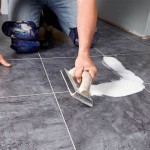Maximizing Your Flooring With Interlocking Vinyl: A Comprehensive Guide
Interlocking vinyl flooring, a versatile and durable flooring option, offers numerous benefits for both residential and commercial applications. Embracing its potential requires a thorough understanding of its essential aspects. This article explores the key considerations to maximize the aesthetic appeal, functionality, and longevity of interlocking vinyl flooring in your space.
1. Choosing the Right Style and Texture
Interlocking vinyl flooring presents a wide array of styles and textures, mimicking the appearance of natural materials such as wood, stone, or tile. Determine the overall design scheme of your space and select a flooring style that complements your decor. Consider the texture as well, as it can influence the ambiance and practicality of the floor. For instance, a smooth texture exudes a sleek and modern aesthetic, while an embossed texture adds depth and traction.
2. Proper Preparation and Installation
A well-prepared subfloor ensures a smooth and stable foundation for your interlocking vinyl flooring. Ensure the subfloor is level, clean, and dry before installation. Some unevenness can be addressed with a self-leveling compound. Follow the manufacturer's instructions carefully during installation, ensuring each plank interlocks securely without gaps or ridges. Proper installation prevents future issues such as buckling or shifting.
3. Maintenance and Care
Interlocking vinyl flooring is known for its ease of maintenance. Regular sweeping or vacuuming removes loose dirt and debris. Occasional mopping with a neutral cleaner and water is sufficient for most cleaning needs. Avoid using harsh chemicals or abrasive cleaners, as they can damage the flooring's finish. For spills or stains, attend to them promptly to prevent permanent damage.
4. Durability and Resistance
Interlocking vinyl flooring boasts exceptional durability and resistance to wear and tear, making it an ideal choice for high-traffic areas. Its multi-layered construction ensures resistance to scratches, dents, and moisture. This flooring option is also UV-resistant, preventing fading caused by prolonged sun exposure. The resilient nature of interlocking vinyl flooring makes it suitable for both indoor and outdoor applications.
5. Choosing Underlayment
Installing an appropriate underlayment beneath your interlocking vinyl flooring provides additional benefits such as increased comfort underfoot, reduced noise transmission, and improved thermal insulation. Select an underlayment that suits your specific needs, whether it be for moisture resistance, sound absorption, or added warmth. A high-quality underlayment enhances the overall performance and comfort of your flooring.
6. Additional Considerations
In addition to the essential aspects mentioned above, consider the following tips to further maximize your interlocking vinyl flooring:
- Leave a small expansion gap around the perimeter of the room to accommodate natural expansion and contraction.
- Use transition strips at doorways or when connecting different flooring types to create a smooth and seamless transition.
- Place rugs or mats in high-traffic areas to protect the flooring from excessive wear.
- Consider the moisture content of your subfloor, especially in areas such as bathrooms or basements, and take appropriate precautions to prevent moisture damage.

How Do You Fit Luxury Vinyl Tiles Floormart

How To Fit Luxury Vinyl Tiles Direct Wood Flooring

Tips For Installing Vinyl Plank Over Concrete Floors Lemon Thistle

How To Fit Luxury Vinyl Tiles Direct Wood Flooring

5gi I4f And Uniclic Vinyl Flooring Systems Compared Wood Beyond Blog

Vinyl Flooring Vs Laminate Luxury Wood Effect Floorbay

Tips For Installing Vinyl Plank Over Concrete Floors Lemon Thistle

Can You Lay Vinyl Over Tiles Luxury Flooring Floorbay

Do I Need Underlay For Lvt Flooring British

The Chemicals In Vinyl Flooring And Their Purposes Brenntag
See Also







